Q
What's the Fuel Consumption of Honda City Hatchback?
The Honda City Hatchback provides different powertrain versions. The fuel-powered model is equipped with a 1.5L DOHC i-VTEC naturally aspirated engine paired with a CVT gearbox, and its official combined fuel consumption is 5.6L per 100km. On the other hand, the e:HEV RS model uses a 1.5L i-MMD hybrid system, and its official combined fuel consumption is as low as 3.7L per 100km. Fuel consumption can be affected by various factors such as driving style, road conditions, and vehicle load, so there may be differences between the actual usage and the official data.
Special Disclaimer: This content is published by users and does not represent the views or position of PCauto.
Related Q&A
Q
What's the Reslae Value of Honda City Hatchback?
The resale value of the Honda City Hatchback is influenced by multiple factors, including the vehicle's age, condition, mileage, market demand, and configuration version. Generally speaking, Honda models have an above - average resale rate in the local market.
Take the City Hatchback launched in 2021 as an example. The new car price of the entry - level 1.5 S is about RM75,000. After three years of use, the second - hand price is approximately between RM55,000 and RM60,000 (depending on the vehicle's condition), which means it retains about 70% - 75% of its original value. If you choose the higher - spec V or RS versions, the residual value may be slightly higher, but it is also affected by mileage and maintenance records.
The Honda brand is quite popular in the Malaysian second - hand car market, especially the City series with a vehicle age of less than five years. Due to its fuel economy and reliability, there is a consistent demand for them. It is recommended that before selling your car, you ensure regular maintenance, keep a complete maintenance record, and refer to the recent transaction prices of the same model to get a more reasonable second - hand valuation. However, the actual price still depends on market fluctuations and the buyer's bargaining situation.
Q
What's the Engine Displacement of Honda City Hatchback?
The Honda City is available in both gasoline and gasoline hybrid (HEV, MHEV) versions. All models are equipped with an engine with a displacement of 1498cc, which is equivalent to 1.5 liters. This engine size strikes a balance between power and fuel efficiency, making it suitable for daily commuting and various driving needs.
The 1498cc gasoline engine can deliver a maximum power of 121 horsepower and a peak torque of 145 Nm. It is paired with a Continuously Variable Transmission (CVT) that enables smooth gear shifts.
In the gasoline hybrid RS e:HEV model, the 1498cc engine works together with an electric motor. The engine has a maximum power of 98 horsepower and a torque of 127 Nm, while the electric motor provides an additional 109 horsepower and 253 Nm of torque. The combined power output offers better acceleration performance.
Q
What Engine Is Equipped by Honda City Hatchback?
The two - door version of the Honda Fit offers different engine options. Some models are equipped with a 1.5 - liter naturally aspirated gasoline engine, with a naturally aspirated (NA) intake system. The engine has a displacement of 1,498 cc, generating a maximum power of 89 kW at 6,600 rpm and a peak torque of 145 Nm at 4,300 rpm, with a maximum horsepower of 121 hp. The vehicle is also equipped with a continuously variable transmission (CVT).
There is also the RS e:HEV model. It is equipped with a 1.5 - liter gasoline engine and a hybrid system. The engine itself can produce a maximum power of 72 kW at 5,600 - 6,400 rpm and a torque of 127 Nm at 4,500 - 5,000 rpm, with a maximum horsepower of 98 hp. The electric motor can provide a total power of 80 kW, a torque of 253 Nm, and a maximum horsepower of 109 hp. The battery type is a lithium - iron phosphate battery with a capacity of 1.3 kWh, and it uses an electronic continuously variable transmission (E - CVT). These engines strike a balance between performance and fuel economy to meet various driving needs.
Q
What's the Type of Honda City Hatchback's Gearbox?
The type of the Honda City's gearbox varies depending on the model and its powertrain. For gasoline-powered models, the transmission type is CVT (Continuously Variable Transmission), providing a smooth driving experience by continuously adjusting the gear ratio, which helps optimize fuel efficiency and power output according to different driving conditions.
For hybrid models like the Honda City RS e:HEV, it is equipped with an E-CVT (Electronically Controlled Continuously Variable Transmission). The E-CVT is specifically designed for hybrid vehicles. It coordinates the power output between the engine and the electric motor, allowing smooth switching between different driving modes such as pure electric drive, engine drive, and hybrid drive, thereby enhancing the overall efficiency and performance of the hybrid system.
Q
What's the PCD Size of Honda City Hatchback?
The PCD (Pitch Circle Diameter) of the Honda City Hatchback is 5x114.3, which means the wheel's bolt holes are arranged in a circle with a diameter of 114.3 mm and consist of 5 bolt holes. This specification is the same as that of the Honda Jazz, certain City Sedan variants, and some mainstream Japanese models in the Malaysian market (such as the Toyota Vios and Nissan Almera), providing ample options for wheel upgrades or replacements.
When changing wheels or tires, owners should not only consider the PCD but also ensure compatibility with the center bore (CB) size, offset, and tire specifications to maintain safety and handling stability. If upgrading to larger or more customized wheels, it is advisable to consult a professional tire shop or an authorized Honda service center to avoid purchasing unsuitable rims that could compromise driving safety.
Q
Does Honda City Hatchback Support Apple Carplay?
The Honda City is equipped with Apple CarPlay. The all-new 2024 Honda Fit hatchback has been launched in Malaysia. The vehicle features an 8-inch multimedia touchscreen on the center console, which supports wireless connection with Apple CarPlay and Android Auto, allowing users to connect their iPhones to the car's infotainment system. Once connected, drivers can directly access various functions of their iPhones, such as navigation, music playback, making calls, and sending text messages, through the car's touchscreen or voice control. By integrating the familiar iPhone interface with the vehicle system, it enhances the in-car experience. This is a very convenient feature for those who rely on their iPhones for various daily tasks and want to achieve seamless connectivity while driving.
Q
What's the Brand of Honda City Hatchback's Tire?
The factory-fitted Honda City Hatchback in the Malaysian market is primarily equipped with Yokohama's BluEarth-GT series tires (specifically 185/55 R16 or 185/60 R15, depending on the variant). These tires emphasize fuel efficiency, durability, and wet-road safety, aligning with the City Hatchback's positioning as an economical family car. However, depending on the production year or promotional packages, some vehicles may be equipped with tires of other brands such as Dunlop or Bridgestone. The exact tire model should be verified based on the factory configuration at the time of purchase.
For owners looking to replace their tires, other brands in the same specification—such as Michelin Energy XM2+ or Continental CC6—can be considered. These are popular energy-saving and comfort-oriented tire options in the Malaysian market, offering a balance between fuel efficiency and quiet performance. Regular checks on tire wear and pressure are recommended, along with adhering to the manufacturer's suggested replacement intervals to ensure driving safety.
Q
Is Honda City Hatchback a Good Car? Learn the Pros and Cons Here
The Honda City Hatchback has many advantages and is a great car. In terms of appearance, it features a delicate, stylish, and sporty design. For instance, some models are equipped with a honeycomb radiator grille and an added rear spoiler. The RS version also has unique trim panels and side skirts, making it highly recognizable. The interior details have been optimized. The RS version has an all - black interior. In some models, the instrument panel has been upgraded to a 4.2 - inch TFT color screen. The central control touch - screen host is 8 inches, and the pixels of the rear - view camera have been improved.
In terms of safety and intelligent assistance, the entire vehicle lineup comes standard with multiple safety systems, such as ABS anti - lock braking, vehicle stability control, lane departure warning, and autonomous emergency braking. There's also an ISO FIX child seat interface. Some models are equipped with the Honda Sensing function, providing comprehensive protection for the driver. Additionally, some models have added practical features like wireless CarPlay and a wireless charging panel.
In terms of power, there are multiple options. The 1.5L naturally aspirated engine paired with a CVT transmission offers a smooth power output, which is sufficient for daily driving. The hybrid system in the e:HEV RS model delivers excellent power and has relatively low fuel consumption. However, it also has some drawbacks. For example, the rear brakes of some models are drum brakes, which are slightly inferior to disc brakes in terms of braking performance. The rear - seat space may feel a bit cramped for taller passengers. Overall, the Honda City Hatchback performs well in terms of appearance, safety, and power, and can meet the daily needs of most users.
Q
What's the Width of Honda City Hatchback?
The Honda City has a width of 1,748 millimeters. This B-segment hatchback offers a comfortable interior space for passengers, and its width helps create a spacious cockpit, providing sufficient shoulder room for both front and rear passengers and enhancing the overall comfort during the drive. Whether it's a short trip around the city or a long-distance journey, this width ensures a more enjoyable driving and riding experience. Moreover, the vehicle's width also plays a certain role in its overall stability and handling on the road.
Q
What's the Road Tax of Honda City Hatchback? How to Calculate It?
The Honda City Hatchback provides petrol and hybrid versions, and the road tax calculation methods vary for different versions. For the petrol version, since its displacement is 1498cc, which is less than 1800cc, according to regulations, it is required to pay 75% excise duty. The specific amount of road tax needs to be comprehensively calculated in combination with the actual value of the vehicle and other factors. Generally speaking, the road tax price to be paid is calculated by multiplying the vehicle value by the 75% excise duty rate and then adding other possible tax items (such as the normal 10% sales tax, which has been waived during the current pandemic).
As for the hybrid version, currently all electric vehicles (including hybrids) registered in Malaysia are exempt from road tax. The tax - exemption period will expire at the end of 2025. Starting from January 1st, 2026, a new policy will be implemented. The road - use tax rate for electric vehicles will be divided into different levels according to engine power: for vehicles with an engine power below 100kW, for every additional 10kW of power, the tax increases by 10 ringgit; for vehicles with an engine power between 100kW and 210kW, for every additional 10kW of power, the tax increases by 20 ringgit; for electric vehicles with an engine power between 210kW (excluding 210kW) and 310kW, for every additional 10kW of power, the tax increases by 30 ringgit. Therefore, the road tax for the Honda City Hatchback hybrid version after 2026 needs to be calculated based on its specific engine power.
Latest Q&A
Q
Is the Nissan Sunny a safe car?
As an economy car, the Nissan Sunny mainly meets the daily commuting needs in the Malaysian market. Its safety performance meets the mainstream standards of vehicles in this segment. The base model is equipped with passive safety features such as ABS+EBD and dual airbags, while the high - end version may add advanced functions like the vehicle stability system. However, it should be noted that its overall safety rating does not reach the top level of some models at the same price range. This is related to the product positioning of this model, which focuses more on fuel economy and cost control.
For Malaysian consumers, if they have higher requirements for safety performance, they can pay attention to new cars launched in recent years that are equipped with intelligent safety technologies such as pre - collision systems and lane - keeping. It is also recommended to check the latest ASEAN NCAP test reports before buying a car and actually experience the performance of safety functions like the active braking system of the vehicle. In addition, no matter what type of vehicle you drive, maintaining defensive driving habits and regularly checking key components such as tires and brakes are important steps to ensure driving safety.
Q
Is the Nissan Sunny spacious?
As an economy sedan, the Nissan Sunny can meet the daily needs of most Malaysian families in terms of space. Its body length is about 4.5 meters and the wheelbase is close to 2.6 meters. The rear - legroom is quite generous for adults of medium build. However, it may feel a bit cramped when three adults are sitting in the back. The trunk volume is about 490 liters, which is sufficient for carrying luggage during daily shopping or short - distance trips.
For consumers who are looking for more space, they can consider models in the same class, such as the Toyota Vios or the Honda City. These models have a slight edge in wheelbase and storage design. Nevertheless, with its high cost - performance ratio and reliable fuel economy, the Nissan Sunny remains a good choice for families on a tight budget.
In Malaysia's hot climate, it is recommended to choose a version equipped with rear air vents to enhance the riding comfort. Meanwhile, regular maintenance of the air - conditioning system can ensure good air circulation inside the car.
Overall, the space performance of the Nissan Sunny is above average among cars in the same class, making it suitable for small families or urban commuting.
Q
How many seater is the Nissan Sunny?
The Nissan Sunny is a classic compact sedan. In the Malaysian market, it usually comes with a 5-seater configuration, making it suitable for daily family use or urban commuting. Its seat layout is a 2+3 design, with two people able to sit in the front row and three passengers in the back row. However, the legroom in the middle seat of the back row is relatively limited, making it more suitable for short trips.
This car is well - known for its economy and practicality. It has good fuel consumption performance and low maintenance costs, which makes it very popular among budget - conscious buyers, especially for the urban road conditions in Malaysia. Among cars in the same class, the Sunny's air - conditioning system is optimized for the tropical climate and has excellent cooling effects. Its trunk has a capacity of about 490 liters, which can meet the storage needs of an average family.
It should be noted that there may be slight differences in seat materials and comfort among models of different years. It is recommended to take a test drive before buying. In the Malaysian market, cars with a similar positioning include the Toyota Vios and the Honda City. Consumers can make a choice based on their personal preferences and budgets.
Q
Which country made Nissan Sunny?
The Nissan Sunny is made in Japan. As a well - known Japanese automobile manufacturer, Nissan has seen this car go through multiple upgrades and replacements since the launch of the first - generation Nissan Sunny in 1966. It has achieved good results in the global market, with a global production volume of over 16 million units. It is developed based on Nissan's V platform and is positioned as a series of compact family cars. It is popular among consumers due to features such as spacious interior space and excellent fuel economy. Although there may be local production and adaptive improvements in different regions, it essentially stems from Japanese automobile design and manufacturing technology. Later, there was also local assembly in some markets. For example, there was a version assembled by Dongfeng in China, and some Sunny models in the US market were produced in Mexico.
Q
What is the maximum speed of a Nissan Sunny?
The official hasn't specified the exact maximum speed of the Nissan Sunny. The actual maximum speed the vehicle can reach is comprehensively influenced by various factors. For example, whether the road conditions are flat and spacious matters. The vehicle's load also plays a role. The more passengers and cargo it carries, the more limited the speed might be. The wind direction and speed also have a certain impact. Driving against the wind will increase resistance. Meanwhile, the maximum speed achieved by drivers with different driving habits also varies.
Although there's no direct data on the maximum speed, from the vehicle's configuration, it's equipped with a 1.6L engine with a maximum horsepower of 120PS. Based on actual driving scenarios, it's speculated that under ideal conditions, the maximum speed can reach around 180 km/h. However, this is just a speculation. It's not recommended to try the extreme speed during actual driving. Safe driving is the most important thing.
View MoreRelated News
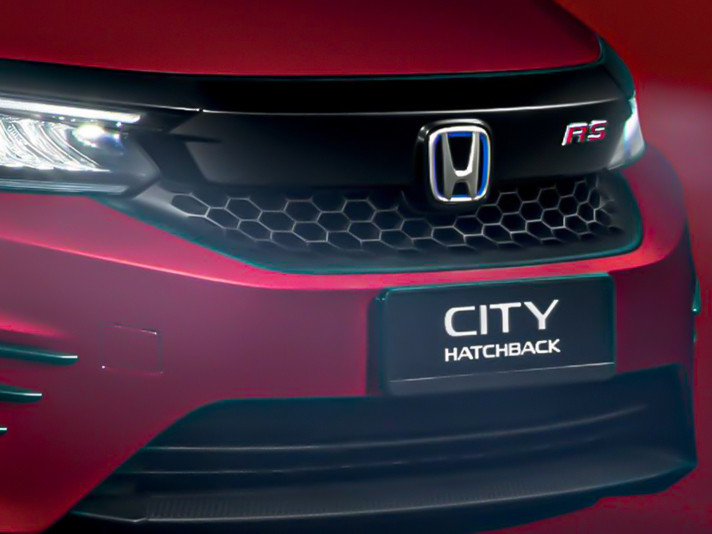
Is Honda City Hatchback Still Worth Buying in 2025?
JohnJun 26, 2025
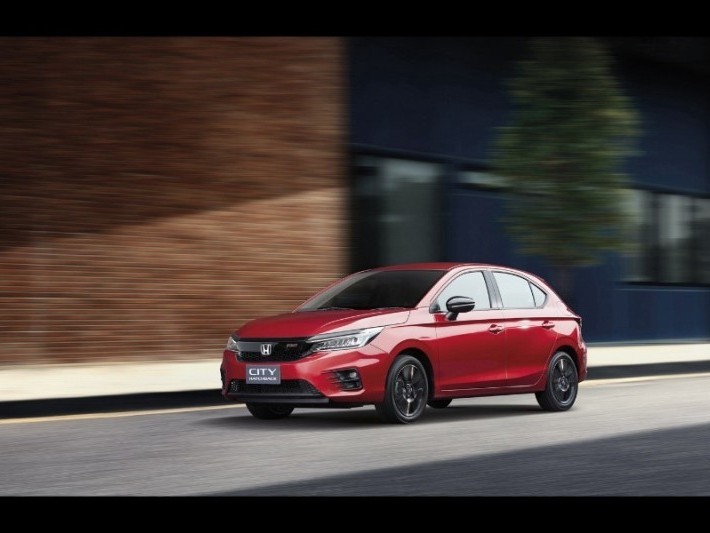
High Cost-Performance: Is the Honda City Hatchback Worth Buying? Dynamic Experience Revealed!
AshleySep 23, 2024
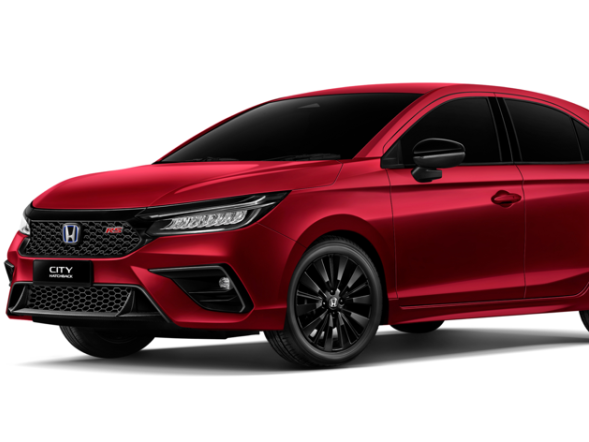
From Jazz to City Hatchback: The Perfect Transformation of Honda Hatchback
LienJun 4, 2024
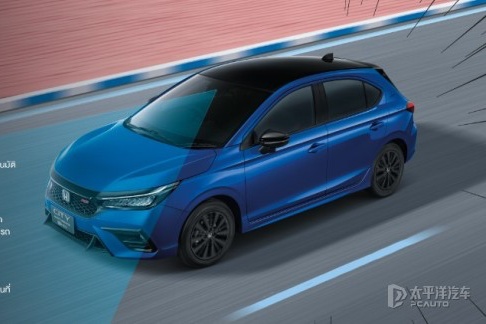
Honda City e HEV Hatchback RS: Fuel Efficiency
AshleyMay 4, 2024

The 2025 Honda Prelude Is Back: Hybrid-Powered Coupe with Type R Chassis Tech
JohnAug 4, 2025
View More



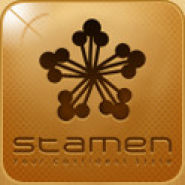









 Cars
Cars


Pros
Cons